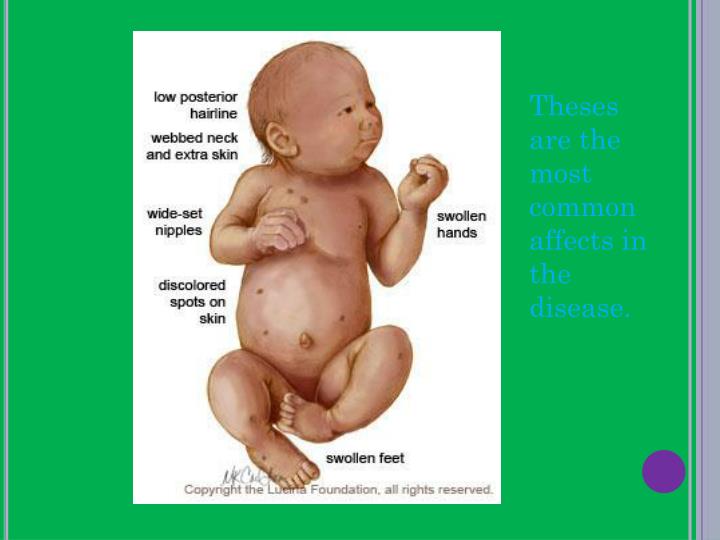

The actual karyotype distribution has been reported recently and includes a few mosaics with approximately 10% normal cells. NIH study participant eligibility criteria included age 7 years or greater and a 50-peripheral white blood cell karyotype, in which over 70% of cells have a missing or fragmented sex chromosome. We have studied 100 girls aged 7–17 years with karyotype-proven TS. This article focuses on patterns of diagnosis and growth hormone (GH) use for TS girls participating in the NIH TS study from 2001 to 2007. Importantly, all these girls need comprehensive cardiovascular evaluation, since over a third have an underlying congenital cardiovascular defect that places them at an increased risk for life-threatening complications, such as pulmonary hypertension (e.g., partial anomalous pulmonary venous connection) or aortic dissection (i.e., bicuspid aortic valve or dilated ascending aorta).

With timely diagnosis and intervention, girls with TS may gain improved height, benefit from attention to nonverbal learning difficulties early in school and have puberty at an age similar to their peers. Full-scale IQ is usually normal, with verbal scores typically greater than performance scores. The most consistent features are short stature and premature ovarian failure. Turner syndrome (TS) is a relatively common disorder of female development (affecting one out of 2000 births) caused by complete or partial monosomy for the X chromosome during embryonic development. We discuss new guidelines for the initiation of puberty and urgent research needed to promote the health and longevity of girls suffering from Turner syndrome as they become adults. These girls were an average of 5 cm taller and significantly less obese than the untreated group. Of the group, 75% were being or had been treated with growth hormone. Major clinical features included thyroid autoimmunity (51%), congenital cardiovascular anomalies (44%), liver abnormalities (36%), hypertension (34%), hearing loss (30%) and renal anomalies (18%). Approximately 25% were diagnosed prenatally or at birth owing to webbed neck and other features typical of fetal lymphedema, few were diagnosed during early childhood, with the majority undiagnosed until age 9 years or older. This article reviews current patterns of ascertainment, clinical characteristics and quality of care for girls with Turner syndrome, based on a cohort of 100 girls (aged 7–17 years) prospectively evaluated at the National Institute of Child Health since 2001.


 0 kommentar(er)
0 kommentar(er)
